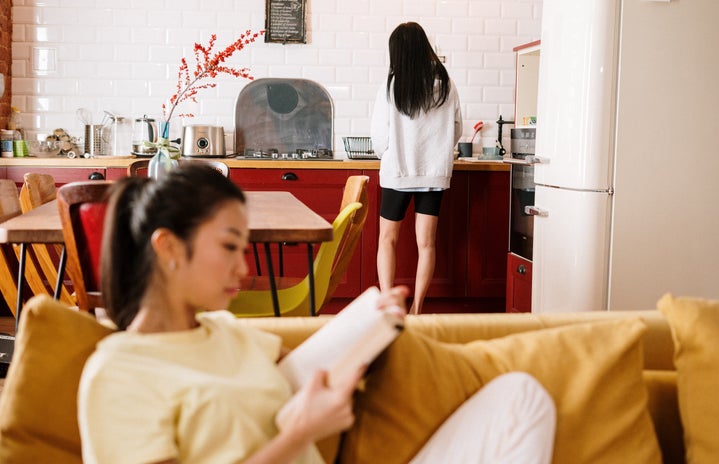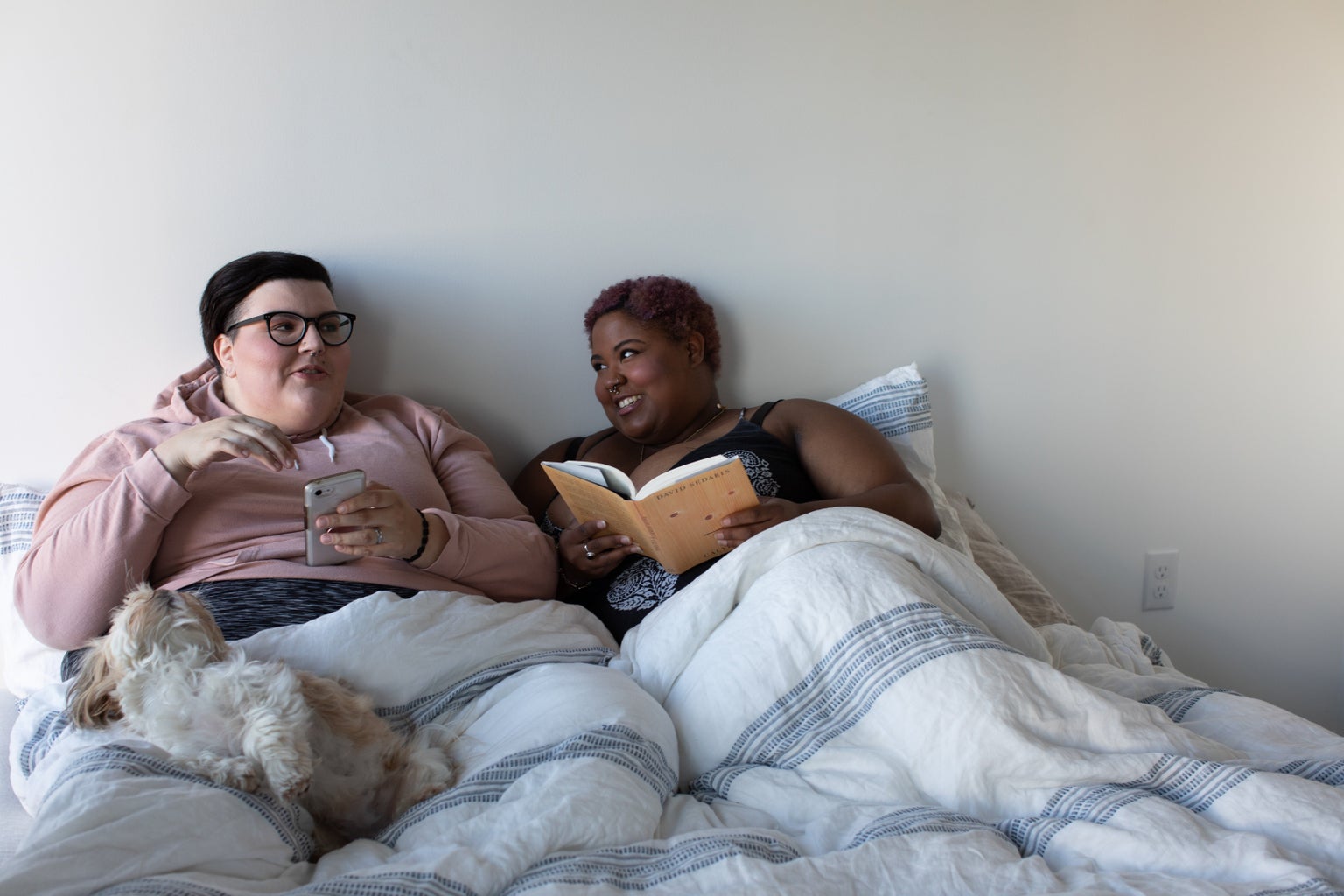Last summer, I was not looking forward to apartment living. My nightmares crawled with nonsensical chore boards and passive-aggressive monologues on the virtues of dish washing. Most of all, I worried that our apartment was too small for five people.
My housing group started our apartment search early, but our dream of a sunny three-bedroom fell through when the landlord sold the unit to a competing group. We accepted our loss and signed the lease on a two-bedroom with peeling walls and retro appliances. This meant I was moving from a triple in De Neve Gardenia to a similar sized room with my same two roommates. Nothing would change, except now we had to clean the bathroom.
All of my anxiety was for nothing because living in an apartment transformed my life for the better. This is a short summary of how apartment living cured me of the agony of dorming.
- Privacy? Never met her.
-
In my first month of dorm living, I developed a paranoia that I was never alone. It started the day I found my roommate asleep in the crawl space behind her desk. It sounds weirder than it was— if I had the same space available to me, I probably would have done the same— but after that I lost all trust in the privacy of my room. I started checking for stray roommates behind desks and under blankets. I remained on edge even after scoping out the room, always listening for the click of a key-card to announce the end of my alone-time. I changed my clothes in a race against an imaginary clock and contorted behind thin wardrobe doors to remain out of sight.
Don’t get me wrong: I loved my roommates, which is why I’m still living with them today. Whenever my high school friends swap roommate horror stories— piles of dirty dishes, live-in boyfriends and loud sex noises during finals week— I have nothing to contribute. My roommates and I meshed so well early on that we felt ourselves melting into one person with the same interests and anxieties. But that was the issue: our schedules lined up until we had no time to ourselves. Our sleep patterns synced so that it was lights-out at grandma hours every night. We were too close for comfort, and sometimes that was stifling.
- take several seats (and make sure they’re comfy)
-
A triple residence hall at UCLA is a Tetris game of bulky, uncomfortable furniture. Some students sell their souls to Amazon for a beanbag or glorified camp chair straight off of a tween’s college Pinterest board. I accepted our air-conditioned personal hell as it was, which meant my primary seat for all of nine months was a straight-backed wooden desk chair. Of all of the struggles of living in a triple, this came closest to an actual human rights violation.
The default dorm furniture was frustratingly uncomfortable. There is nothing more dehumanizing than trying to enjoy B-Plate takeout while gradually losing all feeling in your legs. All year, my bruised tailbone sang of the injustice of my forced seating arrangement.
People don’t talk enough about the mental health benefits of having a comfortable place to sit. Thanks to the gods of Facebook Marketplace, I am now the proud co-owner of a musty greenish-gray sectional. It sags and squeaks and pools with cat hair. It’s the love of my life and a much-needed realm of relaxation fully separate from work or sleep. As my tailbone continues to heal from the trauma of my dorm desk chair, I’m discovering just how restorative it is to feel comfortable in the privacy of your own home.
- Warning: Dorm Not designed for introverts
-
My roommates and I met last fall after each spending most of the pandemic in covid isolation with our families. That meant our first week on campus was socially thrilling— and then we burned out. This was my first time living in near-constant contact with two semi-strangers. Some days, all I wished for was to return home to an empty room for one hour— just to eat lunch and fully breathe in my own presence. I was a covid-conditioned introvert, and the constant social stimulation of living in a triple dorm left me perpetually exhausted.
There is nothing like walls (physical, not mental) to save a roommate relationship. Living in a tiny apartment with four other people is definitely still cramped, but even just having a living area separate from the bedroom increases the probability of a private room by 50%. I can lock a door if I want to get changed and take a shower without being serenaded by somebody in the next stall. On nights when the apartment settles down and I have the living room to myself, I turn down the overhead lighting and sit in the glow of lamps and fairy lights. I’m alone but not lonely, and I can finally breathe.
In all seriousness, moving into an apartment drastically improved my mental health this year. My personal complaints about dorm life might not apply to everyone, but they do point to issues of comfort and privacy within the university housing system as a whole. Colleges are a little too happy forcing students to live in small spaces with strangers. As opposed to comparable universities in countries where double and triple dorming is mostly unheard of, universities in the United States are only getting more overpriced and overcrowded. Dangerous housing proposals like the actual human rights atrocity that is the windowless housing block that an eccentric billionaire designed for UCSB or the “prison boat” now being considered for student housing at Cal Poly Humboldt prove that student health and safety is not being taken seriously. As the housing crisis wages on and student homelessness remains alarmingly common, universities must reconsider their approach to student housing.





